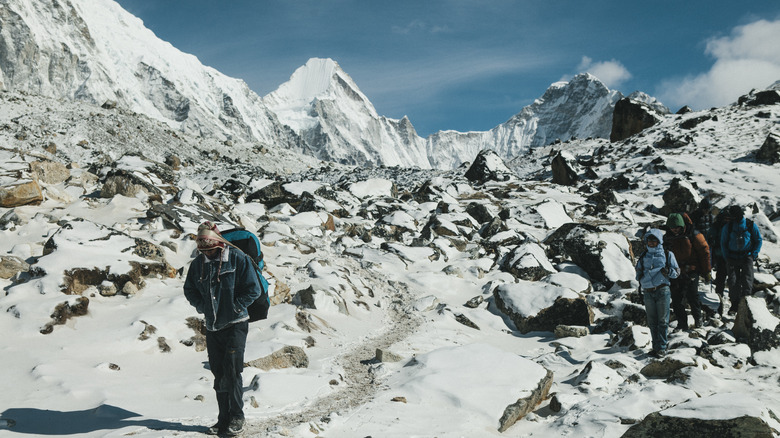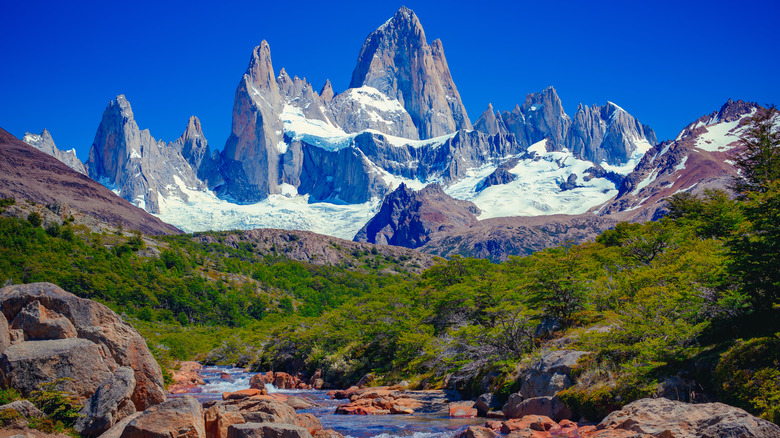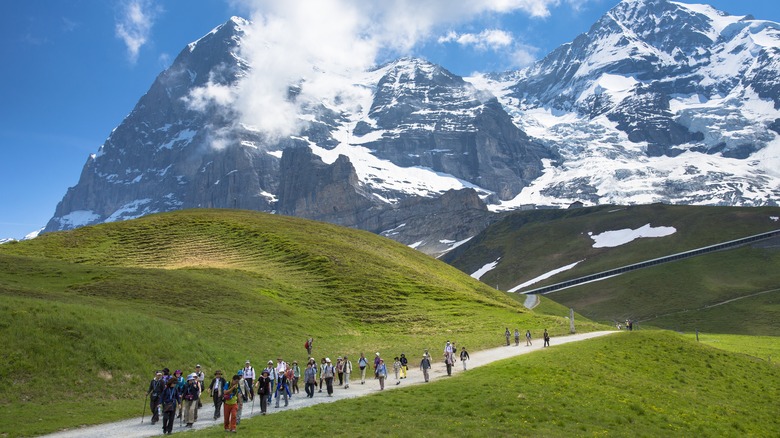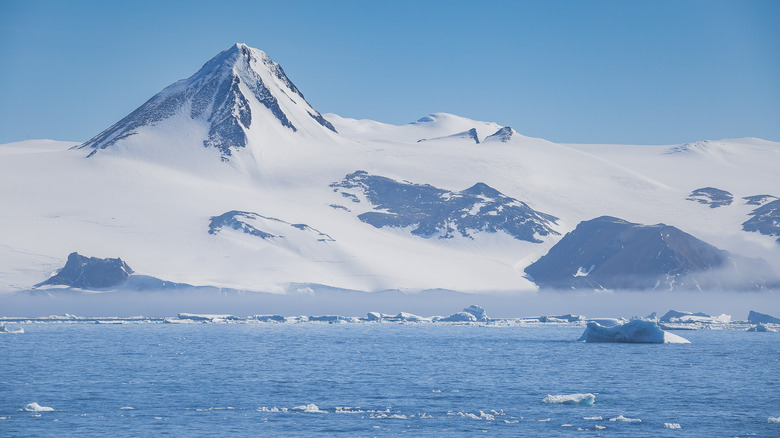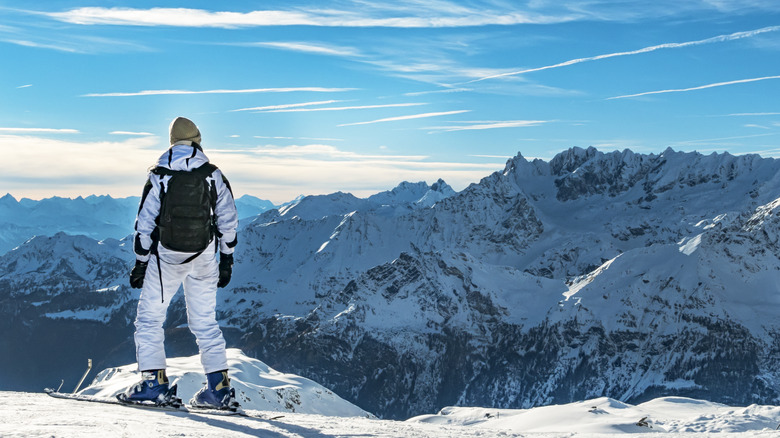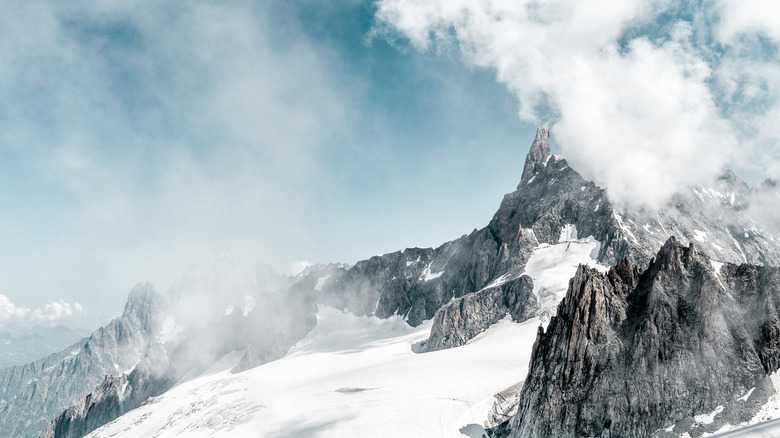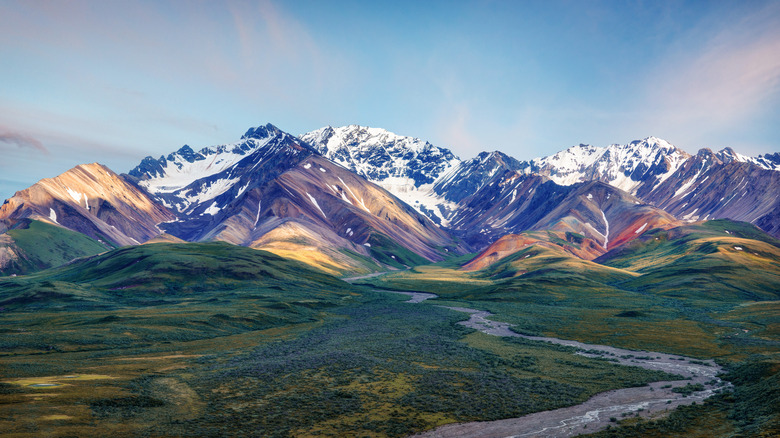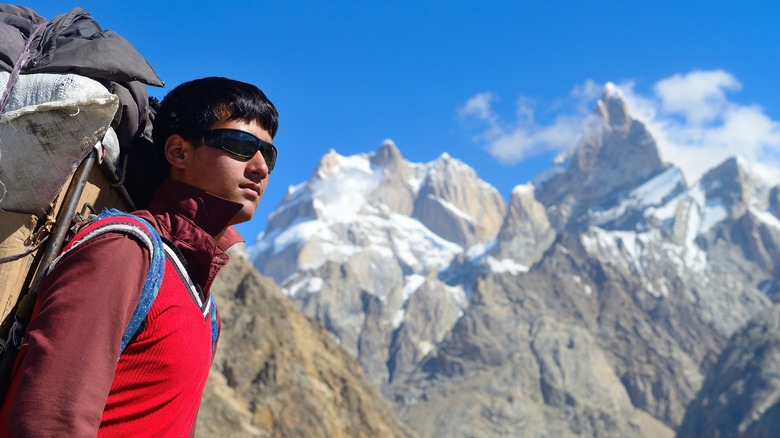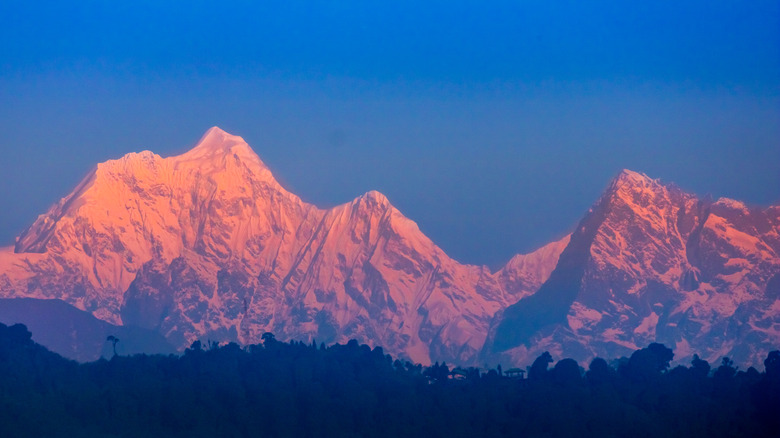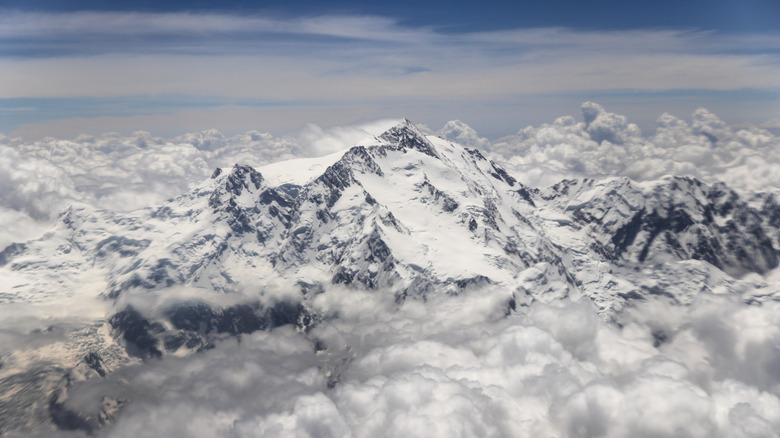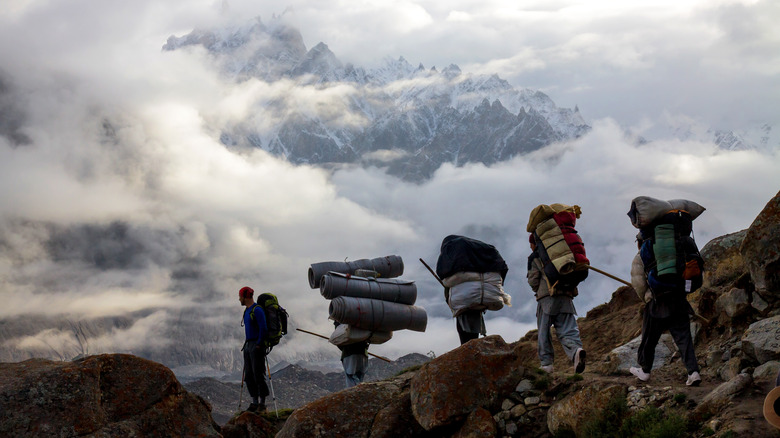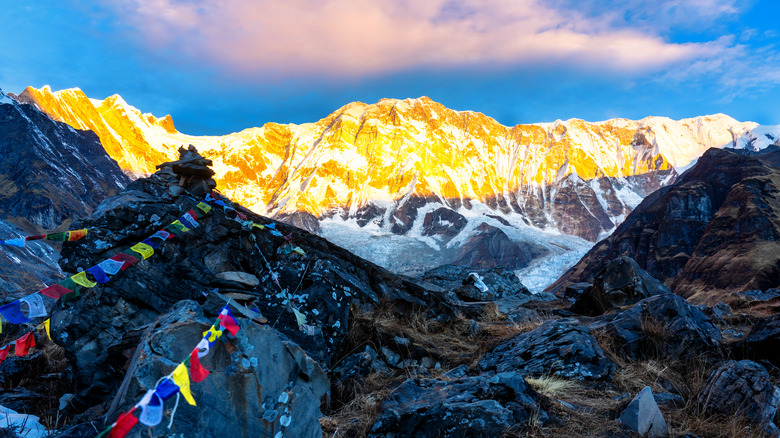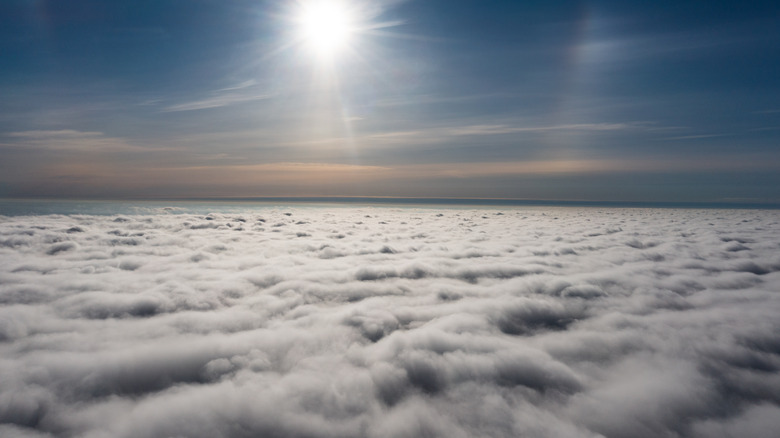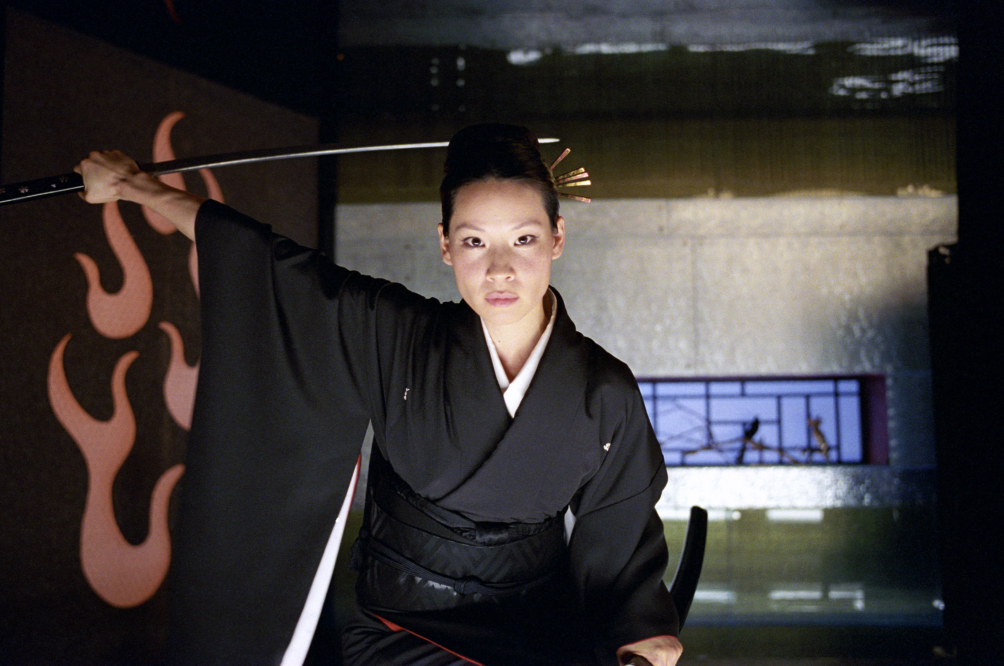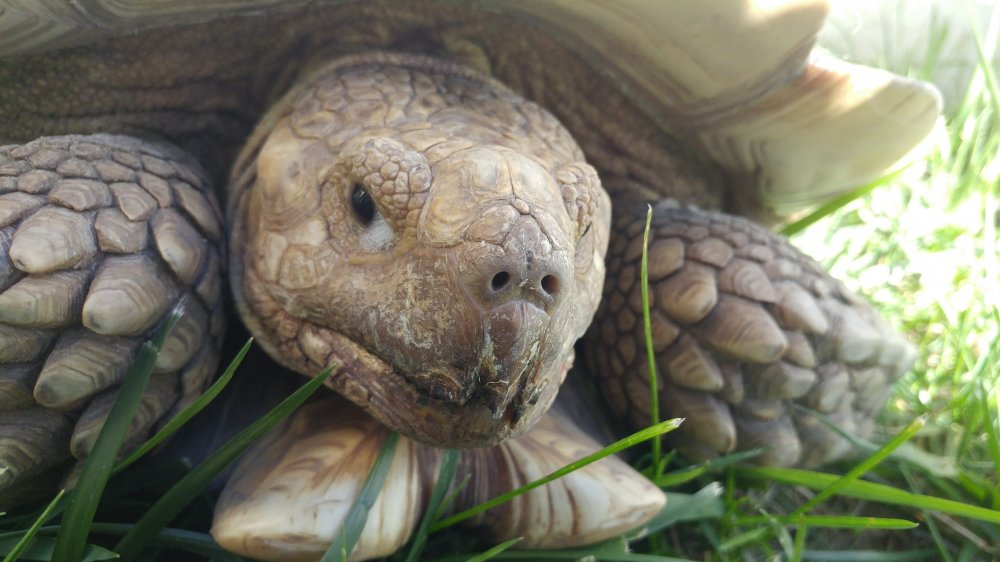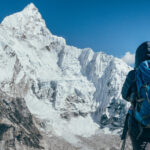
The Earth’s Most Dangerous Mountains To Climb
Summit mountaineering has always been risky and dangerous, but climate change has exacerbated that challenge to a shocking degree. Some who dare to trek these colossal wonders of nature find that their travel guides are outdated, touting safe routes that have changed for the worst.
Rising temperatures and higher freezing elevations are just two reasons why mountaineering has become more hazardous, making rockfall danger more likely. Below-ground layers and permafrost are also evolving. “Ice and snow are melting, and the rocks are waiting to fall. I don’t see a mechanism that would stop this and reduce levels again,” Institute for Arctic and Alpine Research (INSTAAR) affiliate and professor Arnaud Temme said in Outside.
Temme studied various mountain routes after experiencing his own altered experience while trekking back in 2011. “Seven of the 63 routes I studied are now completely removed from any guidebooks, as if they never existed, because they’re too dangerous due to rockfall,” Temme added.
And yet, thousands of climbers and adventure enthusiasts attempt summits to these treacherous peaks today. The element of danger is surely part of the appeal, but global warming has upped the ante on the stakes for these brave souls as they tempt to travel to the top. Some of the world’s most dangerous mountains have fatality rates as high as over 30%. But not all mountains are alike. If you’ve been thinking about braving one of these trips, read on to get an idea of what you’re getting yourself into.
How dangerous is Everest really?
This dangerous mountain became a household name but is not even close to the most treacherous in the world. But Everest has seen some pretty extreme disasters in the past decade. In 2015, a whopping 7.8-magnitude earthquake and avalanche caused an estimated 8,500 fatalities in Nepal, including 19 at Mount Everest Base Camp.
And if a natural disaster doesn’t affect your journey, altitude sickness just might. Once a climber reaches about 8,000 feet, they can easily begin to experience nausea, dizziness, and disorientation. According to Live Science, as long as climbers stay under 12,000 feet, they can avoid a more severe case. But Everest Base Camp lies on an altitude of 17,600 feet, where oxygen levels are nearly half of what they are at sea level.
Many attempt the climb, and most survive, unlike some of these other deathtraps. It has, however, gotten riskier lately. Insider attributes this unfortunate fact to overcrowding. Climbers sometimes have to actually queue in a line to travel to the top, and with only a few days per year that allow the best conditions to summit the mountain, its very popularity could also lead to its guests’ ruination. Sherpas tend to fare better than climbers and mountaineers, so it’s often advised to have them among your summit party as guides.
Everest has 7,500 summits on record, and there have been only 1.4 fatalities per 100 climbers, notes Gear Junkie. That might sound like a lot until you read about its competition.
Monte Fitz Roy inspired Patagonia
At 11,073 feet, Fitz Roy, otherwise known as “Cerro Chaltén” or “Monte Fitz Roy,” is the tallest and one of the most treacherous mountains in Patagonia, residing among the majestic Andes Mountains in stunning South America. Its summit is guarded on all sides by steep rock faces, demanding second-to-none technique.
Fitz Roy is actually the inspiration behind the Patagonia clothing line’s logo and notoriously turns pink at sunrise, as Atlas Obscura points out. It was named after captain of the HMS Beagle, Robert Fitzroy, who charted a good portion of the Patagonian coast in the 1830s, alongside Charles Darwin.
Cerro Fitz Roy, which is now part of Glaciares National Park, can be enjoyed from afar by visitors and can be seen from the nearby village of El Chaltén. However, if you want to climb the mountain, you’ll need a permit. Most mountaineers tempt the journey during the summer (which is December-February in the southern hemisphere). Any time of the year can be notoriously fickle in this region, however. Many who plan on climbing to the top have to wait days, and sometimes weeks, in order for the weather to be suitable and safe for the trip.
The Swiss Murder Wall
The Eiger, located in the Bernese Alps, stands at over 13,000 feet. The mountain boasts the longest north face in the Alps, which has been nicknamed “Mordwand,” which translates to “Murder Wall.”
According to the Sydney Morning Herald, the north face has earned its nickname by claiming over 60 climber’s lives since summits began on the north wall in 1935. The wall is known for its falling rocks and alternation bands of difficult and loose rock and ice. In order to avoid these hazards, mountaineers often climb The Eiger in its coldest months, when rocks are more likely to be “frozen in place.”
However, as mentioned above, climate change has caused much of the ice to melt, making the mountain much more dangerous in the past couple of decades. “The mountain is falling down,” mountain guide Hans Ulei says. “These days I am often woken in the night by a sound like thunder. At 5 a.m. recently I heard that noise, and when I looked from my window the north face was half obscured by a grey cloud of powder from broken rocks.”
The Eiger became more well-known when it was featured in the 1975 Clint Eastwood thriller, “The Eiger Sanction.”
The World's Coldest Desert Mountain
At 16,077 feet, Mount Vinson Massif is the highest peak on the Antarctic continent. Vinson is part of the Sentinel Range of the Ellsworth Mountains, close to Ronne Ice Shelf. People began climbing the mountain in the 1960s after it was discovered by aviator Lincoln Ellsworth for whom the range is named after in 1935.
The elevation combined with its isolated extreme temperatures makes the mountain intimidating. The temperature can drop to minus 40 degrees, and those who brave the journey tend to be stranded sometimes for several days due to frequent aircraft landing delays because of the drastic weather and poor conditions. Snowfall, however, is rarely a problem. Antarctica is sometimes referred to as “the world’s coldest desert.” The South Pole also experiences a six-month period of complete darkness in winter, so summer is the only option climbers have to make the trek to the top.
However, Vinson is not known for its technical difficulty, nor a particularly alarming fatality rate. It’s known as a “short Denali climb,” according to International Mountain Guides.
Trouble on Matterhorn
Matterhorn is 14,691 feet tall and has easy access to high points on the mountain. But this tidbit can be deceiving, leading less-experienced climbers astray, as well as creating overly crowded routes. Matterhorn is kind of the new Everest, making it a tourist destination. It is one of the most recognizable peaks in the world. Zermatt, which is the closest resort, has become the most visited resort in the Swiss Alps.
On average there have been fewer than three deaths since 2010, says the Financial Times, with more than 500 deaths in total on record. That’s more than double the fatality rate of Everest. According to Mountain Tracks, looking up at the peak from Zermatt Valley makes the assent look “impossibly steep and uncompromising.” Climate change has distinctly affected Matterhorn as well, with melting permafrost leading to landslides and rockfalls.
Still, around 3,000 climbers attempt to summit Matterhorn every year — and 150 every day. Pros warn future climbers of the lack of rest stops on the way up. Sure-footedness is also a must for the journey, which varies from climbing ability. Climbers must have the ability to be both agile and secure among snow and ice. Scrambling experience and crampon training are also highly advised.
The Modern Mountaineering Marker
Mont Blanc is the tallest mountain within the Alps. At around 15,780 feet, the mountain has a deadly history, dating back to the 18th century. Its first summit marked the beginning of “modern” mountaineering in 1786 when Jacques Balmat and Michel Paccard reached its peak, says Britannica.
Its popularity sees an average of 12 rescue missions per weekend, but it still leaves 100 climbers dead per year. Despite its allure, Mont Blanc has the highest fatality rate in all of Europe and is known as one of the “world’s deadliest mountains,” according to reporting from The Atlantic. While it is the tallest, it is not necessarily the most difficult to climb on the continent. So why is it so deadly?
One possible explanation is the misleading way it is advertised to prospective climbers simply as a “long walk” and not a serious challenge, giving those not-so-experienced visitors false confidence. Overcrowding also becomes an issue, leaving climbers with less options to find footing, as well as narrow paths that make it hard to pass others. “That ‘production line’ mentality tends to permeate to everyone else around those people,” Aidan Loehr, an American climbing guide, told The Atlantic. “One person makes a bad decision and everyone else assumes it must be safe and follows.”
Like many other dangerous mountains featured here, climate change has also directly affected Mont Blanc. From 1990 to 2017 alone, 102 climbers perished, and 230 were injured due to massive rockfalls, according to Outside.
The Everest of North America
North America can’t compete when it comes to the world’s most dangerous mountains, but Denali takes the prize on its own continent, and it’s not too shabby. At 20,237 feet, it’s both one of the most isolated and most famous peaks on Earth.
Denali is also prone to earthquakes, and its climbers are known for getting extreme altitude sickness. This is due to the lack of oxygen on a peak this size near the equator. Known as the “Everest of North America,” only half who attempt the climb make it to the top, according to Gear Junkie. Glacier travel experience and high altitude experience are musts. And due to the long journey, which could take weeks, survival and camping techniques are a large measure of success or failure. The climb can take three weeks on average.
There are also only four base camps, and the weather in between them can be extremely unpredictable. “Climbers are encouraged to get between camps at a safe but quick pace, however, this is nearly impossible due to the need to acclimatize, meaning the weather can become a factor, and quickly,” writes Katie Machado of The Travel.
The Ogre lives up to its name
Located on the Karakoram range, Baintha Brakk reaches 23,901 feet and is considered one of the most intimidating mountains on the planet. Known as ‘The Ogre,” the first summit was conquered in 1977. And there wasn’t another attempt until 2001. Pretty sure that’s all you need to know.
Doug Scott, one of the mountain’s first climbers, broke both his legs on the way down. He, and fellow climber Sir Chris Bonington, somehow managed to scramble back to base through a major storm and both survived in 1977. Scott’s book, “The Ogre,” goes into more detail about his harrowing experience. In an interview following the book’s release, Scott said, “The Ogre is the most difficult high mountain in the world to climb” (via UIAA).
Baintha Brakk’s sheer altitude, height, and steepness are attractive to daredevil mountaineers. Few have successfully reached the top to this day, making it one of the riskiest, and most complex, mountains on Earth.
Three Times as Hard and Not for Tourists
With the third highest peak in the world, Kangchenjunga is 28,169 feet tall. The weather is fickle up there and includes random avalanches. Fatality rate for climbers is 20% and climbing, meaning a whopping one out of five who dare will perish, reports Men’s Journal. The mountain is even featured in a James Bond novel, notes the Ian Fleming website. Some of Kanchenjunga’s most notable challenges aside from unpredictable avalanches is the “possibility of a snow slip at every step,” according to Indian Express.
Only around 34 climbers attempt this summit annually. To give you an idea of how small this number is, around 350 mountaineers attempt Mount Everest each year.
“Kanchenjunga is three times tougher than Everest,” Satyarupa Siddhanta told Indian Express. “Everest is commercial, a lot of people go there, number of sherpas available are higher in Everest. Helicopters are available and rescue is also easier. Kanchenjunga is a lengthy and tough mountain.”
The trek is 20-plus days long, and those who are up for the challenge better be prepared to camp in extremely cold and drafty conditions in huts teetering across unstable bridges.
A Killer Mountain
At 26,657 feet, Nanga Parbat is the ninth-tallest mountain on Earth, and it has its highest “Rupal South Face,” which rises 15,090 feet. Rupal is the largest and scariest rock wall in the world.
Nanga Parbat is Pakistan’s “Killer Mountain,” according to National Geographic. In 2016, a multi-national crew of three mountaineers successfully reached the summit for the first time ever in winter. At least 30 expeditions were attempted since 1988, but to no avail. The fact that these men achieved this feat during the mountain’s most extreme weather season not only proves their talent but also proves Parbat’s level of difficulty.
Just a few years ago, in fact, a team of climbers also attempted to reach its summit in winter, as relayed by Outside Magazine. The rescue mission required diplomacy between French and Pakistani embassies, and the pilots had never flown in the region. Nevertheless, pilots managed to land the plane safely with a rescue team and found one of the stranded climbers, French citizen Elisabeth Revol, barely alive. She was suffering from hallucinations due to altitude sickness and was badly frostbitten. Her climbing partner wasn’t so lucky. The rescuers managed to save Revol, where she was transferred to a hospital in France and treated, but her partner perished on the mountain.
Nanga Parbat continues to hold its title as one of the most difficult mountains to conquer. To this day, there have been only 339 successful summits, and 69 fatalities attempting to climb it, leaving Nanga Parbat with a around a 22% fatality rate.
A Savage Mountain
K2 is known for being more hazardous to climb than Everest, with its orders of magnitude more difficult. Years go by where there is not one successful summit. At 28,251 feet, it has earned many nicknames. Among them are “savage mountain that tries to kill you,” notes National Geographic, as well as the mountaineer’s mountain. It’s so difficult, it’s generally accepted that one in four climbers die while trying to reach the top. It has never been successfully summited during the winter until 2021, as per Outside Magazine.
The pyramid-shaped mountain with incredibly steep sections of rock is the ultimate challenge for the world’s most experienced and talented mountaineers. One summit attempt alone in 2008 took 11 climber’s lives in one blow.
K2 also has a number of “seracs,” which are ice pillars prone to spontaneously collapsing. Fewer than 400 climbers have ever reached the summit, which means that more people have technically been to outer space than to the top of K2. It has only a one in four survival rate.
The Riskiest Mountain in the World
There’s a strong consensus that this one is quite possibly the winner for most dangerous mountain on the planet. Standing 26,545 tall, Annapurna in Nepal is home to the 10th highest peak in the world and is covered in snow year-round, notes Breeze Adventure. It’s also known for its avalanches. Not to mention its climber’s track record. There’s around a 40% fatality rate for those who dare reach its peak. Annapurna Massif has seen less than 200 successful summits, has been climbed by almost 300 mountaineers, and at least 73 of those have perished, making it statistically the riskiest mountain to summit in the world. One in three will not escape its wrath.
Annapurna’s approximately 26,240-foot peak still mystifies most aspiring climbers, and most will never dare to conquer it. In 2014, a wicked snowstorm hit the mountain, causing avalanches that resulted in the deaths of 43 people, and more than 500 people needed rescuing.

Why Emperor Nero Was One Of Rome's Most Hated Rulers
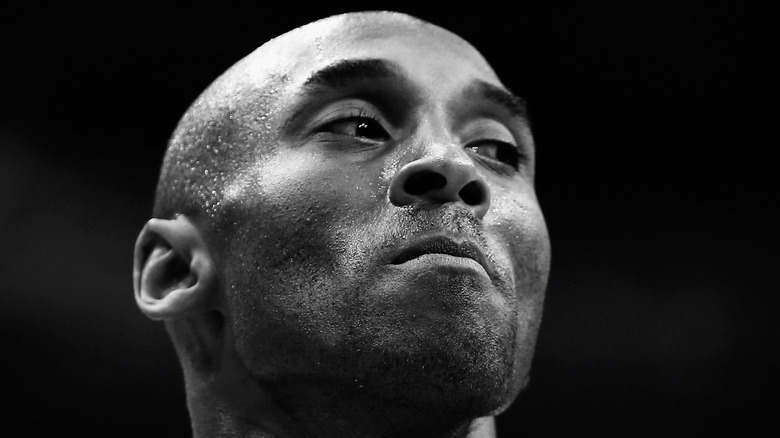
Disturbing Details Found In Kobe Bryant's Autopsy

How 'Weird Al' Yankovic May Have Helped 'Jeopardy!' Get Back On Air

How A Computer Virus Might Have Saved The World From Nuclear Attack
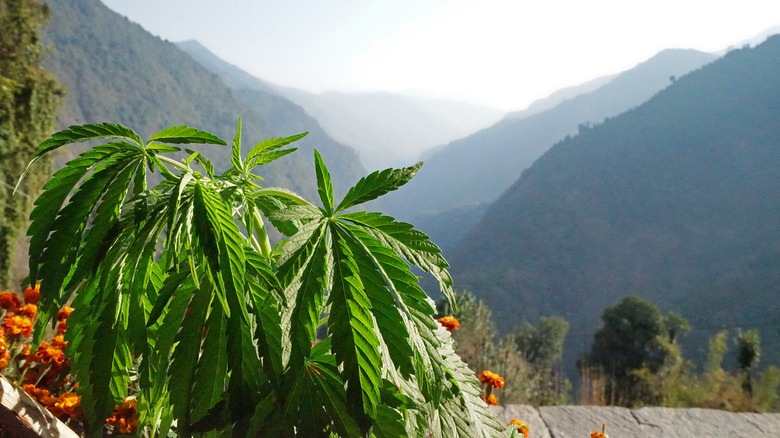
This Is Where Early Humans First Domesticated Cannabis
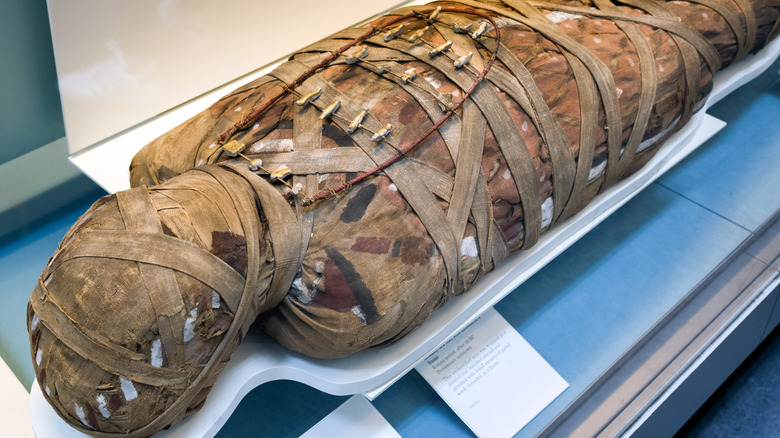
What Experts Think Elite Egyptians Once Did To Lower Class Mummies

The Untold Truth Of General Douglas MacArthur

Evita's Body Was Stolen. Here's What Happened
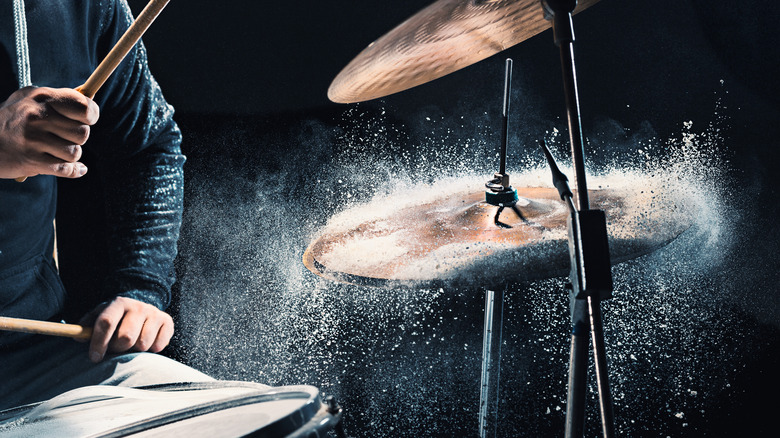
27% Of People Think This Drummer Is The Absolute Worst

The One Thing Elon Musk Is Most Terrified Of
